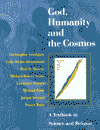The Love Affair Gone WrongThe period from around 1680-1800 saw the
great flourishing of natural theology. The great explanatory power of the new
science, especially of Newtonian physics,
was pressed into service to investigate how the Creator had worked and was
working. In the process more and more purely scientific explanations were given
of natural phenomena. Newton’s successors developed the idea of the mechanical universe. This idea accepted action-at-a-distance without the need for divine mediation, but this was not necessarily in tension with the narrative of God’s creative action. Rather the mechanical model was regarded as constituting the ‘how’ of the great Architect’s work, and was therefore a source of understanding of God’s character. The ‘Book of Nature’ could be read alongside the ‘Book of Scripture’. The great irony of this period is that as
Brooke puts it: ‘the God known
through science would prove most vulnerable to being overthrown in the name of science.’ Mechanistic explanations of natural phenomena, not involving miraculous intervention, were suggestive of true objectivity. Such explanations
Moreover ‘The Book of Nature’ could only give rise to generalised
theistic conclusions about creation; over-focus on this aspect of theology
tended to cut practitioners of natural theology off from the great strengths of
Christianity in giving an account of redemption. Pascal had described seeing in
his famous vision the ‘“God of Abraham, of Isaac and of Jacob”, not of
philosophers and scholars’ John Brooke has emphasised the complexity
of this period, See the rise of Darwinism to understand more about the conflicts that followed an immensely influential scientific proposal - Charles Darwin’s scheme in The Origin of Species (1859), which finally put an end to any simplistic argument from design.
Email
link | Feedback | Contributed by: Dr.
Christopher Southgate |





